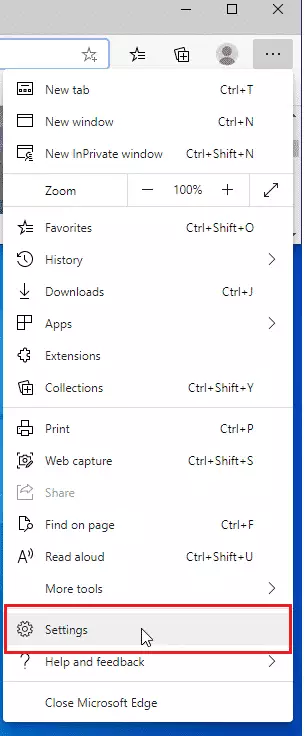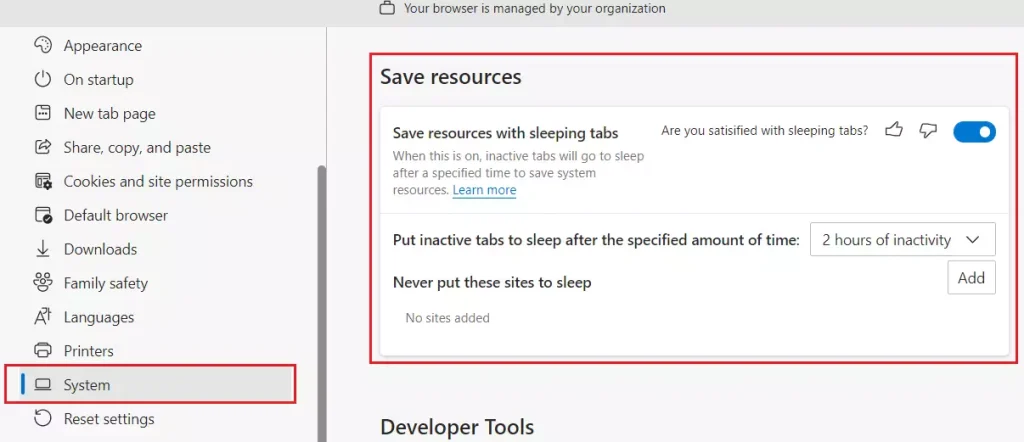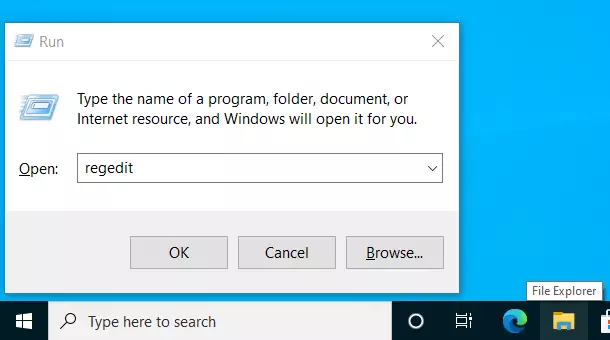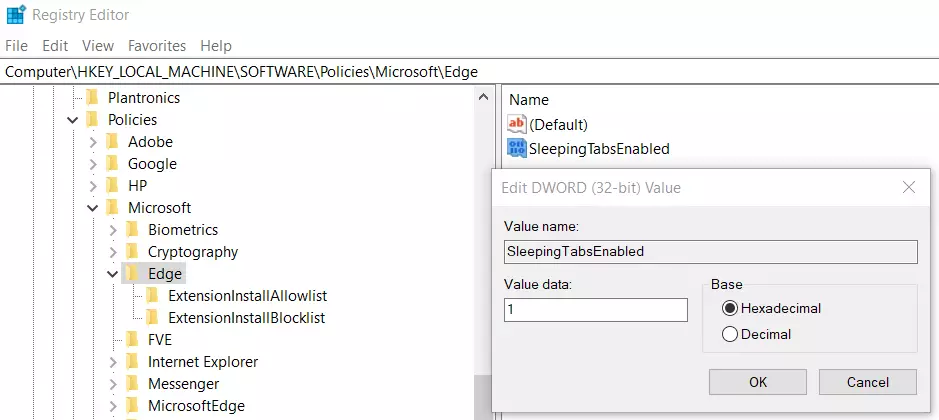This brief tutorial shows students and new users how to turn the sleeping tabs on or off feature in the Microsoft Edge browser.
The new Microsoft Edge browser has adopted the Chromium open-source project code base, offering better web compatibility and performance over the legacy Edge.
Edge browser is a cross-platform which supports all Windows, macOS, and Linux systems if you’re using Microsoft Edge and want to learn how to turn on or off its new Edge sleeping tabs feature, the steps below should show you how to do it.
Microsoft Edge sleeping tabs feature is there to help improve memory and CPU utilization. Microsoft indicated that early internal testing of devices with sleeping tabs had shown a median memory usage reduction of 26% for Microsoft Edge.
Internal testing also showed that an average background tab uses 29% more CPU for Microsoft Edge than a sleeping tab. By default, sleeping tabs are enabled and set to sleep after two hours of inactivity. You can also change that to a longer duration if you like.
To get started with enabling or disabling the Edge sleeping tabs feature, follow the steps below:
Enable Sleeping Tabs from flags
To quickly turn the Edge sleeping tabs on or off feature, open the Microsoft Edge browser and browse, copy, and paste the line below inside the address box.
edge://flags/#edge-sleeping-tabs
From there, you can keep the default settings and turn the feature on or off.

Just below the line to enable sleeping tabs, you can also choose to enable immediate timeout for sleeping tabs. This will Ignore the sleeping tabs timeout setting and immediately put background tabs to sleep on Mac, Windows, and Linux systems.
Enable Sleeping Tabs from Settings
Another way to turn the Edge sleeping tabs feature on or off is from Edge’s setting page. To get there, open the Microsoft Edge browser, go to the three horizontal dots ( . ) at the top right corner of your screen, and select Settings.

When the Settings page opens, go to Systems on the left menu. To the right, under Save resources, choose to enable sleeping tabs.

Exit.
Enable Sleeping tabs from the registry
You can also enable the Sleeping tabs to feature from the Windows registry.
You can also enable Edge Sleeping Tabs via the Windows registry if logged in as an administrator. To do that, use the steps below:
Using the Windows registry is one way to force all users on the system to use Sleeping tabs. There are multiple ways to do this in Windows; however, using the Windows registry is the easiest and most effective way.
To enable, press the Windows Key + R on your keyboard to open the run command box. Or use the search function to search for the Run app.

In the command box, type the commands below and press Enter.
regedit
Then the registry opens; navigate to the path below.
HKEY_LOCAL_MACHINE\SOFTWARE\Policies\Microsoft\Edge
From there, right-click on the Edge key and select the New > DWORD (32-bit) Value option to create a REG_DWORD value if you don’t see the existing SleepingTabsEnabled value already created.

Name the new DWORD value as
SleepingTabsEnabled
After saving the DWORD above, double-click it to open. Then enter the value of 1 to enable.

(delete) = Default
0 = Always disabled
1 = Always enabled
That should do it!
Conclusion:
- The Microsoft Edge sleeping tabs feature is designed to enhance performance by reducing memory and CPU usage.
- Users can manage this feature easily through multiple methods: flags, settings, or the Windows registry.
- By default, sleeping tabs activate after two hours of inactivity, but this setting can be adjusted.
- Enabling this feature can lead to significant resource savings, with reported memory usage reductions of up to 26%.
- Experiment with the different methods to find the one that best suits your needs for managing browser performance.

Leave a Reply